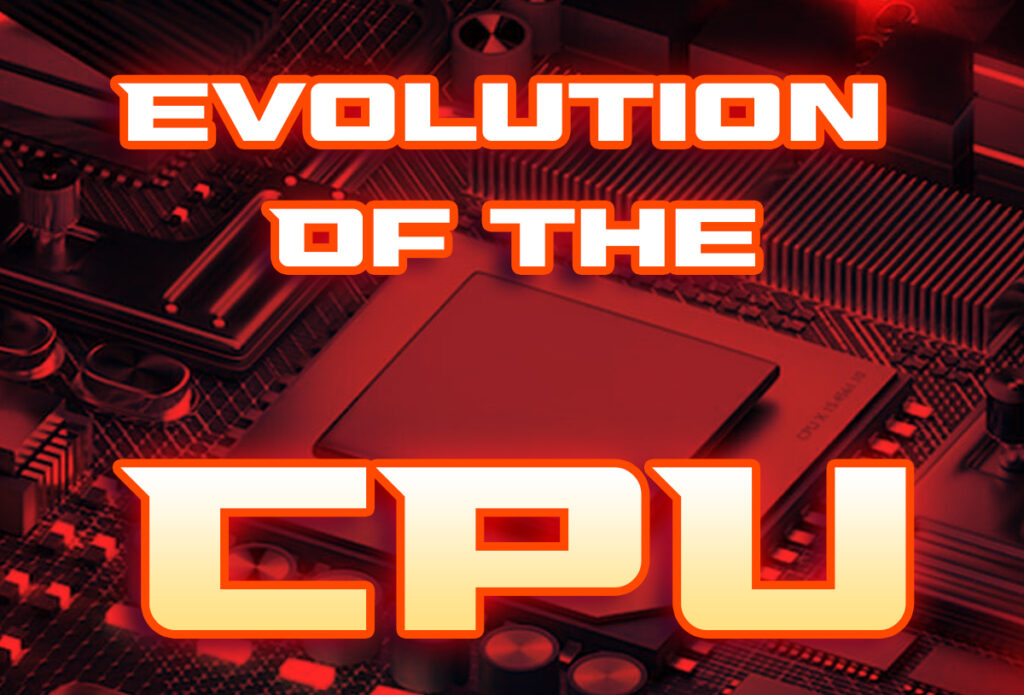Tips
CPU Evolution: From Vacuum Tubes to Modern Processors
CPU Evolution: From Vacuum Tubes to Modern Processors
Introduction
In the dynamic world of technology, few innovations have left as profound a mark as the Central Processing Unit (CPU). From their humble beginnings in the era of vacuum tubes to today’s lightning-fast processors, CPUs have undergone a remarkable evolution. This article explores the journey of CPUs, tracing their path from their early origins to the cutting-edge microarchitectures that drive our digital world.
The Era of Vacuum Tubes
- CPUs originated during the era of vacuum tubes.
- Vacuum tubes were predecessors to modern transistors, forming the basis of early computers.
- Despite being slow and delicate, vacuum tubes enabled basic computations and introduced the concept of computer architecture.
Transition to Transistors
- The late 1940s brought the advent of transistors, a major advancement in CPU technology.
- Transistors replaced vacuum tubes with more reliable and energy-efficient components.
- The shift to transistors laid the foundation for compact and powerful computers, setting the stage for integrated circuits.
Microprocessors: Birth of Modern Computing
- The 1970s marked a pivotal period with the invention of the microprocessor.
- Microprocessors integrated multiple transistors onto a single chip, revolutionizing computer design.
- This innovation led to personal computers and democratized computing power, as seen with Intel’s 4004 microprocessor.
Integrated Circuits
- The adoption of integrated circuits was a critical turning point in CPU evolution.
- Integrated circuits combined transistors, resistors, and capacitors on a single chip for enhanced performance and efficiency.
- CPUs became more sophisticated, enabling complex tasks and applications that were once deemed impossible.
Modern Processors: Era of Multicore Architectures
- The 21st century introduced multicore processors to address limitations of single-core designs.
- Multicore processors featured multiple independent cores on a single chip, allowing parallel task execution.
- This evolution fueled the demands of modern applications, from video rendering to scientific simulations.
Exploring Quantum Computing and Beyond
- The journey of CPU evolution is ongoing, with potential game-changing technologies like quantum computing.
- Quantum processors leverage quantum mechanics to perform calculations at incredible speeds.
- Quantum computing holds the promise of solving complex problems beyond classical computers’ capabilities.
Generations of Microprocessors
- First Generation (1940s-1950s): Primitive microprocessors using discrete transistors laid the groundwork for digital processing.
- Second Generation (Late 1950s-1960s): Integrated circuits increased processing power and efficiency, transitioning from vacuum tubes.
- Third Generation (Late 1960s-1970s): Microprocessors with multiple functions and registers paved the way for early digital computing.
- Fourth Generation (1970s-1980s): The microprocessor revolution began with chips like Intel’s 4004, driving personal computing.
- Fifth Generation (1980s-Present): Continued growth in computational power through integration of more transistors. Rise of CISC and RISC architectures.
Size of Microprocessors: From Nanometers to Micrometers
- Technological advancements led to reduced microprocessor sizes measured in nanometers (nm).
- Smaller sizes accommodate more transistors, resulting in increased processing power and energy efficiency.
Types of Microprocessors
- CISC (Complex Instruction Set Computing): Early microprocessors with complex instructions simplified programming at the cost of speed.
- RISC (Reduced Instruction Set Computing): RISC processors prioritize optimized instructions, excelling in specific tasks.
- Multi-Core Processors: Meeting demand for processing power by integrating multiple cores for parallel task execution.
Features of Microprocessors
- Clock Speed: Determines instruction execution speed, influencing processing performance and heat generation.
- Cache Memory: High-speed buffer between CPU and memory, reducing latency and enhancing overall performance.
- Instruction Set Architecture (ISA): Defines instructions a microprocessor can execute, catering to various applications.
- Pipeline Architecture: Enhances efficiency by concurrently processing instructions through stages.
Advantages of Microprocessors
- Increased processing power supports complex calculations, powering fields like AI and graphics rendering.
- Compactness and energy efficiency led to portable devices like smartphones and wearable technology.
- Versatility allows microprocessors to be used in diverse applications, from consumer electronics to industrial automation.
Disadvantages of Microprocessors
- High-performance microprocessors generate heat, necessitating effective cooling solutions.
- Complexity in designing and programming as microprocessors become more sophisticated.
- Limited parallelism despite multi-core processors, impacting certain tasks.
Computer Revolution and Microprocessors
- Microprocessors ignited the computer revolution, democratizing computing power and transforming industries.
- Personal computers became accessible, driving innovation in healthcare, finance, entertainment, and communication.
Exploiting Instruction Level Parallelism
- Instruction level parallelism (ILP) enhances performance by executing multiple tasks simultaneously.
- Superscalar and out-of-order execution architectures capitalize on ILP, accelerating computational tasks.
Looking Forward
- Quantum computing and neuromorphic computing hold promise for the future of microprocessors.
- Quantum processors with qubits can tackle previously insurmountable challenges.
- Neuromorphic computing aims to mimic the brain’s efficiency and adaptability.
Conclusion
- The evolution of microprocessors showcases human innovation and progress.
- From discrete transistors to modern multi-core processors, CPUs have shaped the digital landscape.
- Quantum and neuromorphic computing promise exciting possibilities.
- The journey of microprocessors continues, expanding computing boundaries and redefining possibilities.
